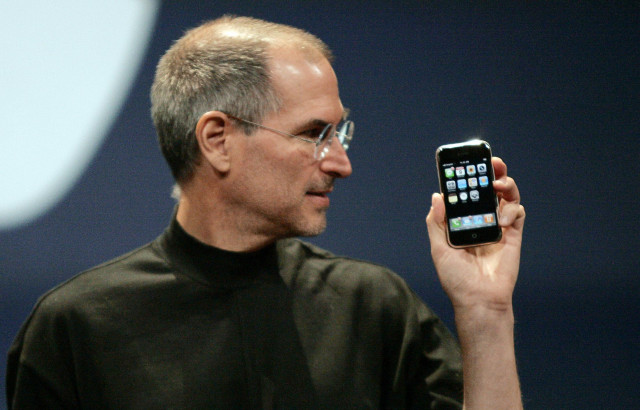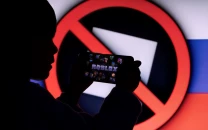Apple's iPhone turns 10, bumpy start forgotten
Apple has sold more than 1 billion iPhones since June 29, 2007

Apple Computer Inc. Chief Executive Officer Steve Jobs holds the new iPhone in San Francisco, California January 9, 2007. PHOTO: REUTERS
Apple has sold more than 1 billion iPhones since June 29, 2007, but the first iPhone, which launched without an App Store and was restricted to the AT&T Inc network, was limited compared to today's version.
iPhone 8 might cost you as much as a MacBook
After sluggish initial sales, Apple slashed the price to spur holiday sales that year.
"The business model for year one of the iPhone was a disaster," Tony Fadell, one of the Apple developers of the device, told Reuters in an interview on Wednesday. "We pivoted and figured it out in year two."
The very concept of the iPhone came as a surprise to some of Apple's suppliers a decade ago, even though Apple, led by CEO Steve Jobs, had already expanded beyond computers with the iPod.
Don’t try this 'trick' on your iPhone
"We still have the voicemail from Steve Jobs when he called the CEO and founder here," said David Bairstow at Skyhook, the company that supplied location technology to early iPhones. "He thought he was being pranked by someone in the office and it took him two days to call Steve Jobs back."
The iPhone hit its stride in 2008 when Apple introduced the App Store, which allowed developers to make and distribute their mobile applications with Apple taking a cut of any revenue.
Ten years later, services revenue is a crucial area of growth for Apple, bringing in $24.3 billion in revenue last year.



















COMMENTS
Comments are moderated and generally will be posted if they are on-topic and not abusive.
For more information, please see our Comments FAQ